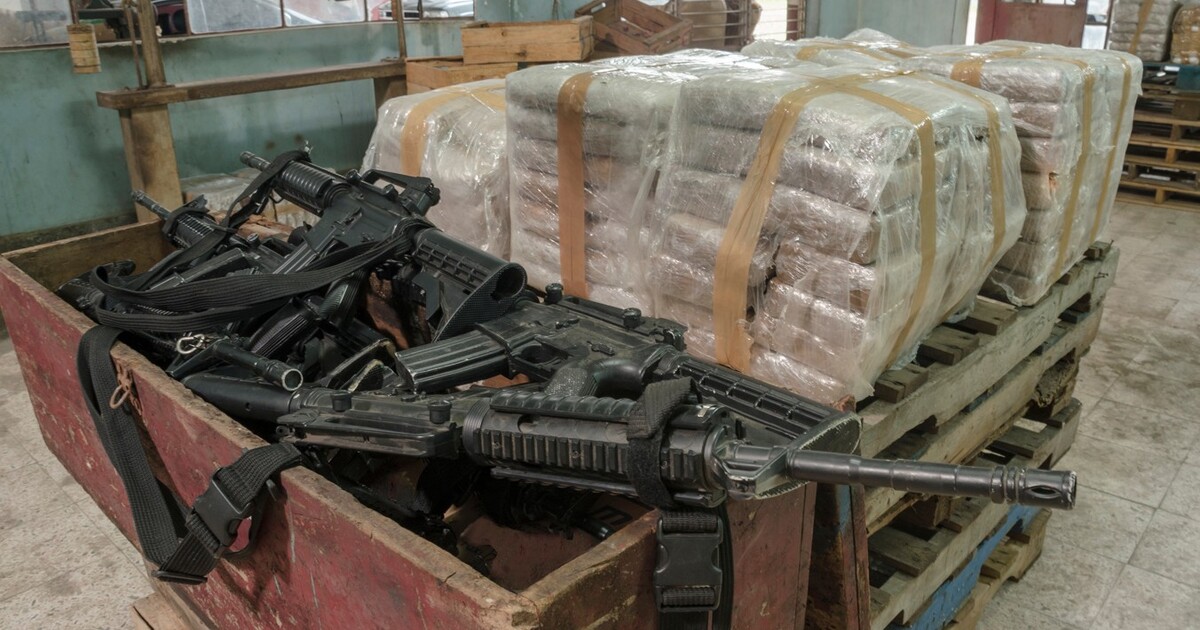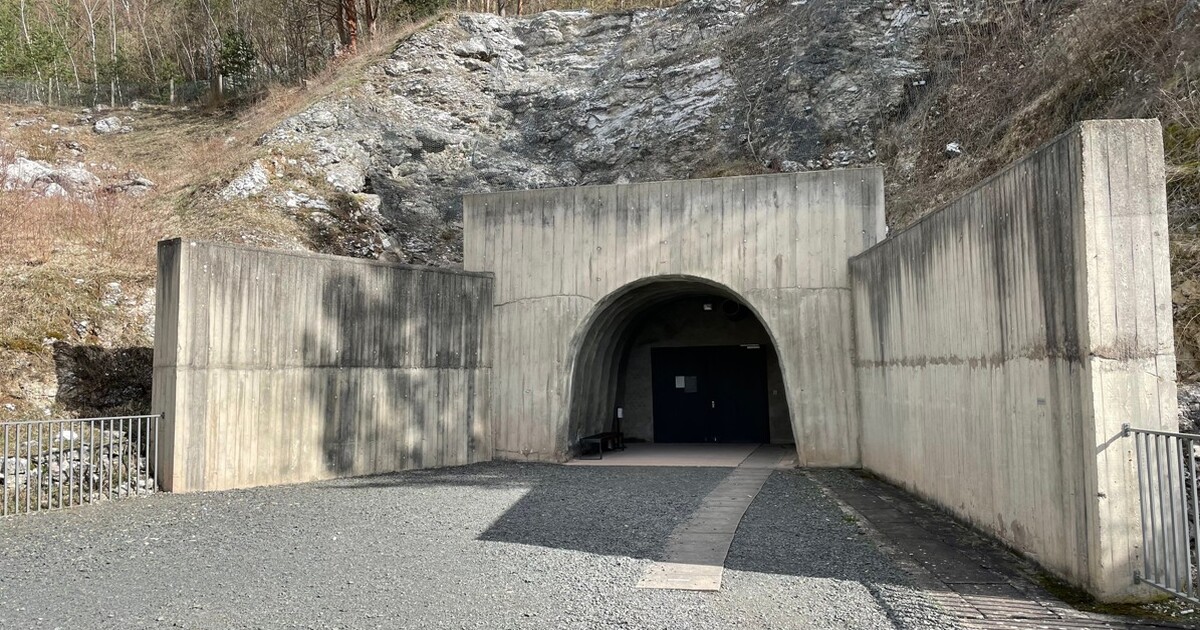Exporting Crisis: How the War on Drugs Destabilized the Global South
Unregulated arms flows and heavy-handed security policies have fueled organized crime and human rights abuses in fragile states. A sustainable solution requires multilateral cooperation.
November 21, 2025

The United States’ “War on Drugs,” inaugurated in the early 1970s, set out to suppress domestic drug consumption and dismantle trafficking networks through a combination of aggressive law enforcement, interdiction and crop eradication overseas.
Yet, half a century on, U.S. anti-drug policies have neither appreciably reduced U.S. demand nor eradicated the international drug trade.
Instead, they have externalized violence, instability and the socio-economic costs of prohibition onto weaker states in Latin America, West Africa and Southeast Asia.
What began as an effort to protect U.S. citizens has evolved into a global project of border externalization, where the true collateral damage is borne far from Washington in societies ill-equipped to absorb it.
The exportation of violence
In Latin America, U.S. initiatives such as Plan Colombia (2000–present) and Mexico’s Mérida Initiative (2009–2021, later renamed the Acuerdo Bicentenario) illustrate the unintended consequences of military-focused aid.
Plan Colombia channeled billions in U.S. military hardware, training and budgetary support to Bogotá, targeting coca eradication and guerrilla groups. Although coca cultivation fell in some regions, rural communities suffered displacement when fumigation campaigns destroyed both illicit and licit crops.
At the same time, paramilitary forces and some elements of the Colombian military committed human rights abuses — so-called “false positives” — killing civilians and presenting them as guerrilla combatants to secure bonuses and equipment.
Far from promoting peace, these tactics fueled grievances and deepened mistrust in state institutions.
Mexico’s cartel scourge
Mexico’s Mérida Initiative, likewise, sent weapons, surveillance equipment and training to Mexican federal forces to stem cartel violence. Yet, from 2006 to 2015, homicide rates soared, surpassing the previous decade’s peaks.
Cartels fragmented into increasingly violent cells, and competition over lucrative trafficking routes intensified.
Local police forces, unable to resist better-armed criminal groups, became complicit in corruption or were overwhelmed altogether.
Rather than rebuilding trust in civilian law enforcement, the emphasis on military operations entrenched a perception that violence was the only effective response to organized crime.
West African transit routes
In West Africa, fragile states such as Guinea-Bissau and Ghana have become transit points for cocaine from Latin America bound for European markets. Lured by international funding for counter-narcotics operations, national security forces often lack the institutional safeguards to manage large-scale assistance.
Rather than curbing trafficking, programs inadvertently strengthened corrupt networks: Military officers and local elites diverted aid, profited from protection rackets and used state funds to fortify personal power bases.
In a region grappling with poverty and weak governance, the influx of drug-war resources has exacerbated instability, triggering coups and hollowing out legitimate state capacity.
The arms trade and the globalization of criminal markets
A critical enabler of today’s cross-border violence is the unregulated flow of arms. The United States remains the world’s largest exporter of conventional weapons, supplying partner nations with rifles, aircraft and surveillance systems. Yet significant numbers of these weapons leak into illicit markets.
In Mexico alone, an estimated 70% of firearms seized at cartel crime scenes are traced to U.S. origins. Similarly, in Central America’s Northern Triangle — Guatemala, Honduras and El Salvador — smuggled U.S. pistols and assault rifles arm gangs that terrorize urban poor communities.
Beyond the Western Hemisphere, traffickers connect drug markets with arms dealers in Eastern Europe and the Middle East, creating a truly global network of organized crime.
These weapons not only escalate the lethality of turf wars but also enable criminal syndicates to diversify into human trafficking, illegal mining and wildlife poaching.
Each new illicit market generates fresh revenue streams, reinforcing a cycle of violence that no single country can defeat alone.
The militarization of security and human rights abuses
U.S. funding for military‐style anti-drug operations frequently overlooks the human rights implications of blurring law enforcement with warfare. In the Philippines, President Rodrigo Duterte’s 2016 “War on Drugs” adopted a shoot-to-kill approach reminiscent of U.S. interdiction tactics.
Over one hundred thousand suspected drug users and dealers have died, many in extrajudicial executions carried out by police working under “kill quotas.”
The resulting climate of fear extends far beyond individuals directly involved in drugs. Ordinary citizens and civil society actors face intimidation — eroding public trust in institutions meant to protect them.
Colombia’s “false positives” scandal offers another cautionary tale. Military units, rewarded for high body counts, executed innocent civilians — farmers, street vendors and displaced persons — then dressed them in guerrilla garb to claim battlefield kills.
International outcry eventually triggered investigations, but the damage — tens of thousands of lives lost, communities torn apart and the army’s reputation shattered — was irreparable.
In both cases, the celebration of “success metrics” over due process has shown that militarized approaches to drug control not only fail to stem the flow of illicit substances but also corrode the social contract between citizens and the state.
The global trend of crisis externalization
The externalization paradigm extends beyond drugs. Faced with migration surges, wealthy states increasingly offload border management duties onto poorer neighbors.
The European Union’s deals with North African countries to host asylum-seekers and the United States’ cooperation with Central American governments to detain and process migrants are emblematic.
Similarly, climate change — driven largely by industrialized nations — disproportionately devastates low-income countries, which receive scant assistance to adapt. Each policy shifts the burden of problems created by developed states onto those least responsible and least able to cope.
Regional destabilization and the rise of authoritarian responses
As violence and illicit economies engulf societies, public demand for “strongman” solutions often grows. In El Salvador, the “mano dura” (iron fist) anti-gang policy embraced mass arrests, military patrolling of slum districts and razor-wire perimeter fencing.
Crime statistics temporarily dipped, but high-profile crackdowns did little to dismantle the social networks that feed gang recruitment. Instead, overcrowded prisons — run by gang leaders from within — became incubators for further criminal organization.
Similar dynamics play out across Latin America and Africa: Hard-line rhetoric and heavy-handed tactics gain political popularity even as they sacrifice civil liberties and entrench authoritarian governance.
Shared responsibility and the illusion of reform
Despite periodic pledges of “shared responsibility,” global drug control remains dominated by punitive, U.S.-led paradigms. International forums echo calls for “alternative development,” yet budgets for eradication and interdiction dwarf those for crop substitution, rural education or public health.
Producer-country governments, reliant on foreign aid packages, face a stark choice: Adopt militarized strategies to maintain funding or risk political isolation. The result is an illusion of reform — talk of human rights and demand reduction masking a continued emphasis on supply suppression.
The urgent need for global drug policy transformation
A sustainable resolution demands a fundamental shift in perspective. First, decriminalization of personal use and possession must replace incarceration as the default response. Portugal’s experience — where decriminalization coincided with reductions in overdose deaths, HIV infections and overall drug use — demonstrates the efficacy of health-centered models.
Second, harm-reduction services (needle exchanges, supervised consumption sites) should be expanded and destigmatized. Third, long-term investments in education, employment and rural infrastructure can address the root socio-economic drivers of drug cultivation and trafficking.
Finally, genuine multilateralism requires that policy debates include the voices of affected communities: Small-scale farmers in the Andes, civic-society organizations in West Africa and public-health experts in Southeast Asia.
Only by recognizing drug policy as a matter of global development and human rights — rather than solely as a national security concern — can the international community dismantle the cycle of exported violence and build resilient societies across the Global South.
The clock has run on half-a-century of misplaced priorities. It is time to end the externalization of crisis and forge a more just, cooperative approach to drugs on a truly global scale.
Takeaways
The U.S.’s war on drugs set out to suppress domestic drug consumption and dismantle trafficking networks. Yet, it has not appreciably reduced U.S. demand or eradicated the international drug trade.
Unregulated arms flows and heavy-handed security policies have fueled organized crime and human rights abuses in fragile states. A sustainable solution requires multilateral cooperation.
The U.S. remains the world’s largest exporter of conventional weapons, supplying partner nations with rifles, aircraft and surveillance systems.
U.S. funding for military‐style anti-drug operations frequently overlooks the human rights implications of blurring law enforcement with warfare.
Genuine multilateralism on drugs requires that policy debates include the voices of affected communities: Small-scale farmers in the Andes, civic-society organizations in West Africa and public-health experts in Southeast Asia.
The clock has run on half-a-century of misplaced priorities. It is time to end the externalization of crisis and forge a more just, cooperative approach to drugs on a truly global scale.
Only by recognizing drug policy as a matter of global development and human rights can the international community dismantle the cycle of exported violence and build resilient societies across the Global South.
Read previous

Global History
The Failure of “Never Again”?
4 days ago
